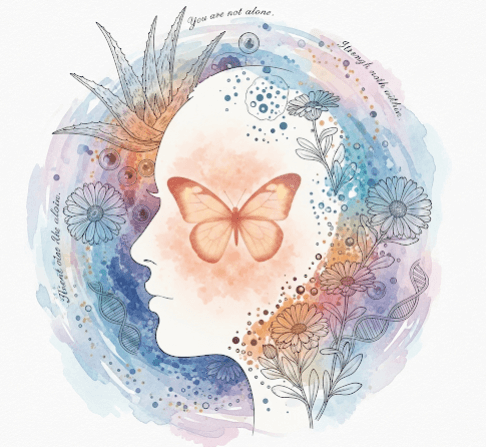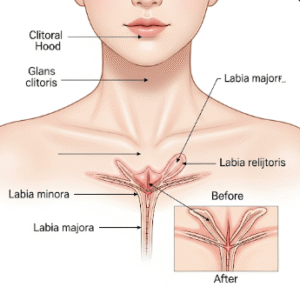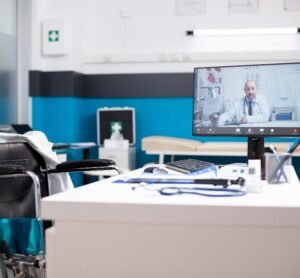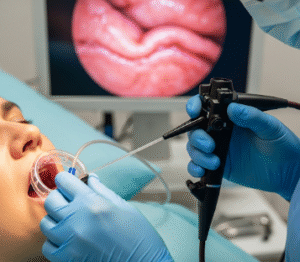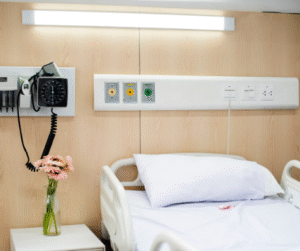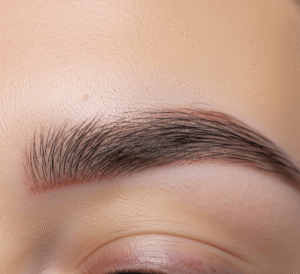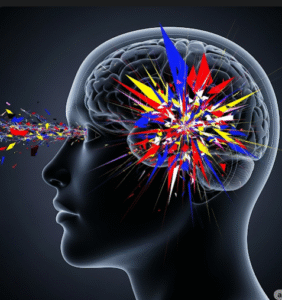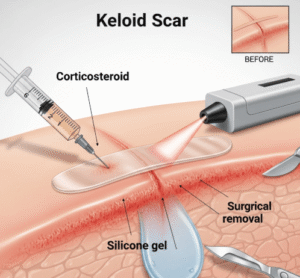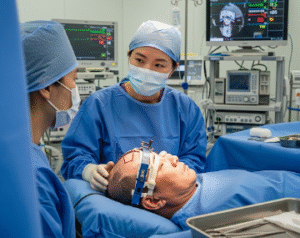What It Is
Defining Cutaneous Lupus
→ Cutaneous lupus erythematosus (CLE) is an autoimmune skin condition where the immune system mistakenly attacks the skin, leading to rashes, lesions, and sensitivity to sunlight.
→ CLE can occur independently or as part of systemic lupus erythematosus (SLE), but in many cases it is limited to the skin.
→ The condition often causes red patches, scaly lesions, pigment changes, and scarring, particularly on sun-exposed areas such as the face, scalp, neck, and hands.
→ In Korea, dermatology clinics provide comprehensive support programs for patients with CLE, including medical management, skin protection strategies, and cosmetic rehabilitation.
Key Characteristics
- Photosensitivity → Symptoms worsen with UV exposure
- Skin Lesions → Red, raised, or scaly patches, sometimes ring-shaped
- Scarring → Chronic lesions can leave permanent marks or hair loss on the scalp
- Chronic Course → Symptoms flare and improve in cycles
- Overlap with Autoimmune Conditions → May co-exist with systemic lupus or thyroid disease
Why It’s Done
Main Reasons for Seeking Support
➡ Symptom Management – Reducing inflammation, rashes, and discomfort.
➡ Prevention of Scarring – Early care reduces long-term skin damage.
➡ Cosmetic Support – Improves appearance and self-confidence.
➡ Health Monitoring – Identifies potential systemic involvement.
➡ Emotional Relief – Living with visible lesions can be distressing; support programs ease psychological burden.
Alternatives
Non-Medical Options
- Strict Sun Protection → Use of sunscreen, hats, and protective clothing is essential.
- Lifestyle Adjustments → Avoiding smoking, stress, and excessive sun exposure.
- Camouflage Makeup → Conceals visible lesions and pigment changes.
Medical Alternatives
→ Depending on severity, different treatments are used:
- Topical Corticosteroids → First-line for reducing inflammation.
- Topical Calcineurin Inhibitors (Tacrolimus, Pimecrolimus) → Useful in sensitive areas like the face.
- Antimalarial Drugs (Hydroxychloroquine, Chloroquine) → Widely used for CLE in Korea; reduce flares and improve skin condition.
- Systemic Immunosuppressants → Methotrexate, azathioprine, or mycophenolate mofetil for resistant cases.
- Biologic Therapy → Newer treatments under investigation for lupus-related skin disease.
Preparation
Before Care and Treatment
➡ Dermatology and Rheumatology Consultation – Essential to confirm diagnosis and check for systemic lupus.
➡ Blood Tests and Biopsy – ANA testing, skin biopsy, or immunofluorescence may be used for confirmation.
➡ Medication Review – Doctors check for drugs that may trigger lupus-like reactions (e.g., certain blood pressure or heart medications).
➡ Sun Behavior Assessment – Patient’s daily sun exposure habits are reviewed.
➡ Counseling – Patients are prepared for long-term management rather than quick cures.
How It’s Done
Supportive Care in Korea
1. Medical Management
→ Korean dermatologists typically start with topical therapy and escalate to systemic medications if needed.
- Corticosteroid creams for active lesions
- Calcineurin inhibitors for delicate facial areas
- Antimalarial drugs (hydroxychloroquine) prescribed for generalized involvement
2. Sun Protection Programs
→ Korea emphasizes strict UV protection as part of CLE support.
- Broad-spectrum sunscreens (SPF 50+)
- UV-protective clothing and window films
- Patient education sessions in dermatology clinics
3. Laser and Light-Based Therapy
→ Used for cosmetic support after inflammation is controlled.
- Pulsed-dye laser for persistent redness
- Fractional laser for scarring or pigment correction
- Caution is used since excessive light exposure may worsen lupus
4. Cosmetic Camouflage and Dermatology Makeup
→ Specialized camouflage products and skin tone correction treatments are available in Korean clinics.
- Professional makeup training sessions for patients
- Semi-permanent tattooing (medical camouflage) for depigmented patches
5. Counseling and Psychological Support
→ Living with a visible autoimmune condition can affect mental health.
- Korean hospitals often provide support groups and counseling services
- Integrated care focuses on both skin improvement and emotional resilience
6. Systemic Support
→ For severe or generalized CLE, patients are referred to rheumatologists for integrated care.
- Immunosuppressants or biologics may be introduced under careful monitoring
Recovery
Immediate Recovery
- With topical treatments, redness and scaling improve in weeks.
- Systemic therapy may take 1–3 months for noticeable improvement.
- Sun protection provides immediate relief by preventing flares.
Long-Term Recovery
→ CLE is a chronic, relapsing condition, but proper support reduces flare frequency and intensity.
→ Patients in Korea often follow maintenance regimens with hydroxychloroquine, sun protection, and regular dermatology visits.
→ Cosmetic support improves quality of life, even if scars remain.
Complications
Possible Risks
- Scarring and Pigment Changes → Chronic lesions may leave white or dark patches.
- Hair Loss → Permanent scarring alopecia if scalp is affected.
- Side Effects of Medication → Long-term steroid use may thin skin; hydroxychloroquine requires eye monitoring.
- Psychological Burden → Anxiety, depression, and self-esteem issues are common without support.
- Progression to Systemic Lupus → A small percentage of CLE patients may develop systemic disease.
Treatment Options in Korea
Advanced Dermatology and Integrated Support
Korean dermatology clinics combine medical, cosmetic, and psychological care, making them leaders in lupus support.
Why Korea Excels in Cutaneous Lupus Care
➡ Multidisciplinary Clinics – Dermatologists, rheumatologists, and cosmetic specialists collaborate.
➡ Emphasis on Prevention – Strong focus on UV avoidance and skin protection.
➡ Innovative Therapies – Access to advanced lasers, immunomodulators, and clinical trials.
➡ Cosmetic Integration – Korean clinics are renowned for camouflage solutions and skin rejuvenation programs alongside medical care.
Popular Approaches in Korea
- Localized CLE → Managed with topical therapy and sun protection.
- Widespread CLE → Treated with antimalarial drugs and phototherapy.
- Scarring and Pigment Loss → Addressed with camouflage makeup, laser therapy, or semi-permanent tattooing.
- Refractory Cases → Referred to rheumatology for systemic immunosuppressants.
Patient Experience in Korea
- Support programs often include medical treatment, lifestyle counseling, and cosmetic advice.
- Korean clinics emphasize natural-looking cosmetic improvements while controlling disease activity.
- Patients receive comprehensive aftercare kits with sunscreen, moisturizers, and scar concealers.
- Many clinics also provide online monitoring and follow-up apps to help patients manage their chronic condition.
Conclusion
Cutaneous lupus support in Korea is a holistic, multidisciplinary approach that focuses on both controlling the disease and improving quality of life.
Through topical therapy, systemic medications, sun protection, cosmetic camouflage, and counseling, Korean dermatologists provide well-rounded care for CLE patients.
While lupus cannot be cured, Korea’s emphasis on prevention, long-term management, and cosmetic integration ensures patients receive some of the most advanced and patient-focused support worldwide.

